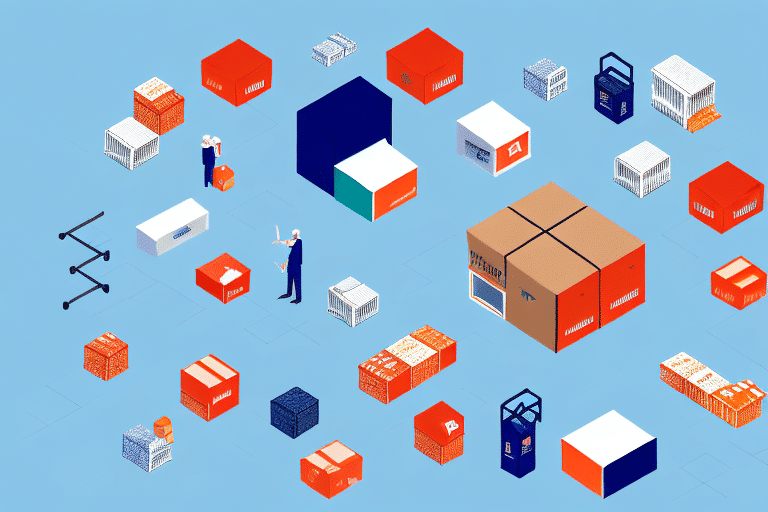Logistics Management for Small Businesses: Setting Clear Objectives for Success
Running a small business can be challenging, especially when it comes to logistics management. Setting clear objectives that align with your business goals is essential for success. This article explores key logistics objectives, best practices, and strategies to help you effectively manage your logistics and achieve your business goals.
Setting Clear Logistics Objectives
Establishing specific, measurable, achievable, relevant, and time-bound (SMART) objectives is crucial for effective logistics management. Clear objectives help align logistics operations with overall business goals, ensuring efficiency and customer satisfaction.
Defining Your Logistics Goals
Conduct a comprehensive analysis of your business needs, customer requirements, and product or service specifications. Utilize data-driven insights to set realistic goals such as reducing delivery times, improving customer satisfaction, and increasing operational efficiency.
Regularly Reviewing and Adjusting Objectives
As your business evolves, so should your logistics objectives. Regularly evaluate and adjust your goals to accommodate new products, market expansions, or changes in customer demand. This ensures that your logistics operations remain aligned with your business strategy.
Optimizing Shipment Processes
Efficient shipment processes are vital for reducing costs and improving delivery times. Conducting comprehensive shipment audits and effective scheduling can significantly enhance your logistics operations.
Conducting a Comprehensive Shipment Audit
A shipment audit involves a detailed analysis of your shipment processes to identify inefficiencies and areas for improvement. Key steps include:
- Reviewing shipping history to identify trends and patterns.
- Assessing shipment processes to pinpoint bottlenecks.
- Analyzing carrier contracts to ensure competitive rates.
- Communicating with carriers to enhance relationships and processes.
- Streamlining packing, labeling, and documentation procedures.
Evaluating inventory management practices as part of the audit can also help reduce stockouts, improve order accuracy, and minimize carrying costs.
Effective Scheduling in Logistics
Proper scheduling ensures timely deliveries and optimal resource allocation. Key strategies include:
- Identifying peak shipping times and adjusting schedules accordingly.
- Allocating resources based on demand forecasts.
- Utilizing real-time shipment monitoring to ensure deadlines are met.
- Implementing automation tools to optimize scheduling and reduce errors.
- Planning for contingencies such as weather disruptions or carrier delays.
Choosing the appropriate transportation mode based on shipment needs—whether air, ocean, or ground freight—can further optimize your schedule and reduce costs.
Enhancing Efficiency with Technology and Tracking
Leveraging technology and real-time shipment tracking can vastly improve the efficiency and transparency of your logistics operations.
Implementing Advanced Logistics Technology
Modern logistics software solutions can streamline processes, reduce costs, and enhance customer satisfaction. Essential tools include:
- Transportation Management Systems (TMS)
- Warehouse Management Software (WMS)
- Freight Management Solutions
- Order Management Systems (OMS)
- Transportation Analytics Software
Staying updated with the latest technology ensures your logistics operations remain competitive and efficient.
Maximizing Efficiency with Real-Time Shipment Tracking
Real-time tracking provides visibility into the shipment process, allowing for proactive management of exceptions and enhanced communication with carriers and customers. Benefits include:
- Reducing shipping errors and customer complaints.
- Providing accurate delivery estimates.
- Improving communication across the supply chain.
- Identifying potential delays before they escalate.
Analyzing shipment data from tracking systems can help identify areas for further efficiency improvements and cost reductions.
Collaborating with 3PL Providers and Business Partners
Partnering with third-party logistics (3PL) providers and other businesses can enhance your logistics capabilities, reduce costs, and expand your market reach.
Advantages of Working with a 3PL Provider
3PL providers offer specialized expertise in transportation, warehousing, and order fulfillment, allowing you to focus on core business activities. Benefits include:
- Access to advanced logistics technology and systems.
- Scalability to handle peak demands and business growth.
- Cost savings through consolidated shipments and optimized routes.
- Enhanced customer service with professional handling of shipments.
When selecting a 3PL provider, consider their industry experience, service offerings, technology capabilities, and customer support to ensure a good fit for your business needs.
Collaborating with Other Businesses
Forming strategic partnerships with suppliers, carriers, and other businesses can lead to shared resources, reduced transportation costs, and expanded market access. Benefits include:
- Sharing transportation and warehousing resources.
- Collaborative forecasting and inventory management.
- Joint investments in logistics technology and infrastructure.
Such collaborations can foster innovation and lead to more efficient and resilient supply chains.
Securing Competitive Shipping Rates and Service Types
Managing shipping costs and selecting the right service types are critical for maintaining profitability and meeting customer expectations.
Obtaining Multiple Carrier Quotes
Securing the best shipping rates requires obtaining and comparing quotes from multiple carriers. Steps to negotiate favorable rates include:
- Analyzing shipment volumes, destinations, and specific requirements.
- Leveraging your bargaining power based on consistent shipment volumes.
- Communicating transparently with carriers about your expectations.
- Considering long-term contracts and value-added services.
Planning ahead, especially during peak seasons, can help lock in competitive rates and avoid last-minute price hikes.
Choosing the Right Shipping Service Types
Select the appropriate shipping service based on product type and customer needs. Common service types include:
- Standard Shipping: Cost-effective delivery within 3-5 business days.
- Expedited Shipping: Faster delivery within 1-2 business days.
- Express Shipping: Time-definite delivery within 24-48 hours.
- Scheduled Delivery: Delivery at a specific time or date.
- International Shipping: Delivery to global destinations.
Aligning service types with customer expectations ensures satisfaction and repeat business, especially for time-sensitive or high-value products.
Maintaining Customer Satisfaction and Managing Returns
Meeting and exceeding customer expectations is essential for business success. Effective logistics management plays a key role in customer satisfaction and handling returns efficiently.
Meeting Customer Expectations
Ensure timely and accurate deliveries by:
- Using reliable shipping carriers.
- Providing customers with real-time tracking information.
- Maintaining clear communication regarding shipment status.
- Offering flexible shipping options to meet diverse needs.
Exceeding expectations can lead to positive reviews, repeat business, and increased customer loyalty.
Managing Returns and Reverse Logistics
Handling returns efficiently minimizes operational disruptions and maintains customer trust. Key practices include:
- Establishing a clear returns policy.
- Streamlining the returns process for both customers and your business.
- Using inventory management software to track returned items.
- Processing refunds or exchanges promptly.
Effective reverse logistics can turn returns into opportunities for customer retention and brand improvement.
Conclusion
Effective logistics management is critical to the success of small businesses. By setting clear objectives, optimizing shipment processes, leveraging technology, collaborating with partners, securing competitive shipping rates, and maintaining high levels of customer satisfaction, small businesses can enhance their logistics operations and achieve sustained growth.
Maintaining accurate inventory records and efficiently managing returns are also essential components of a robust logistics strategy. Utilizing inventory management software and establishing clear returns processes help ensure that businesses can meet customer demands while minimizing costs and operational disruptions.




















